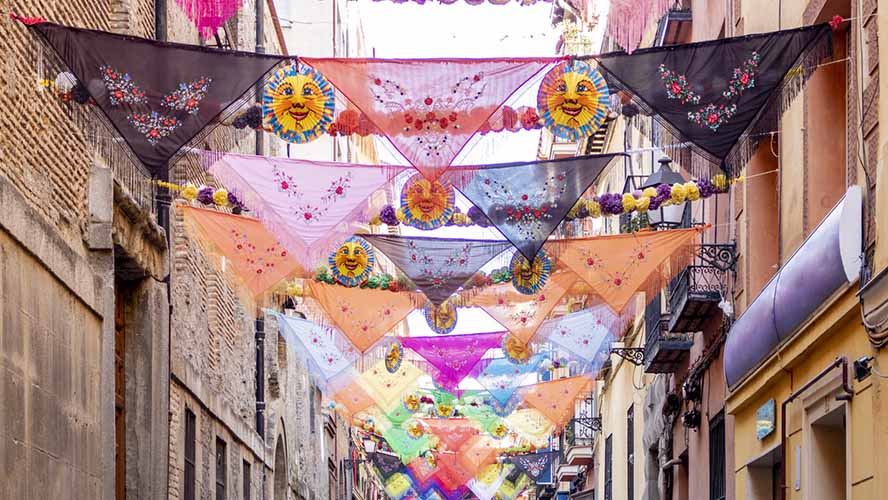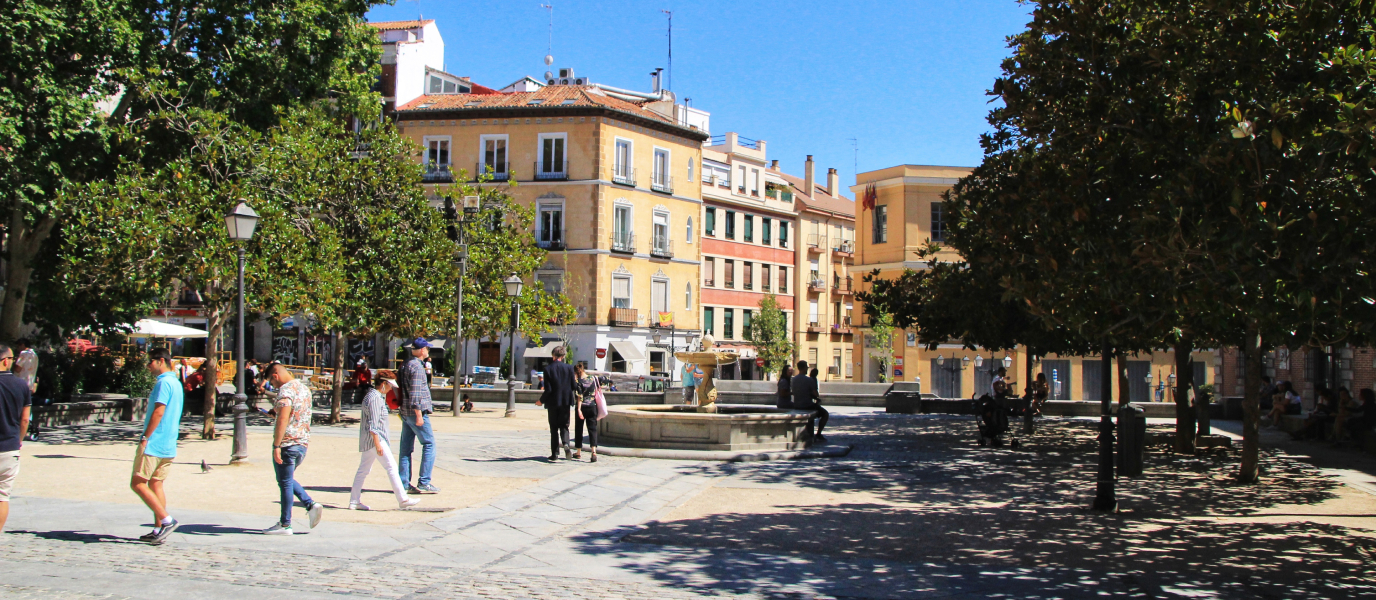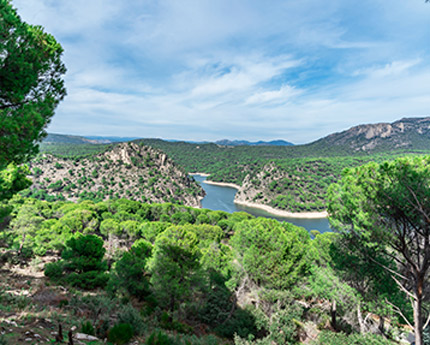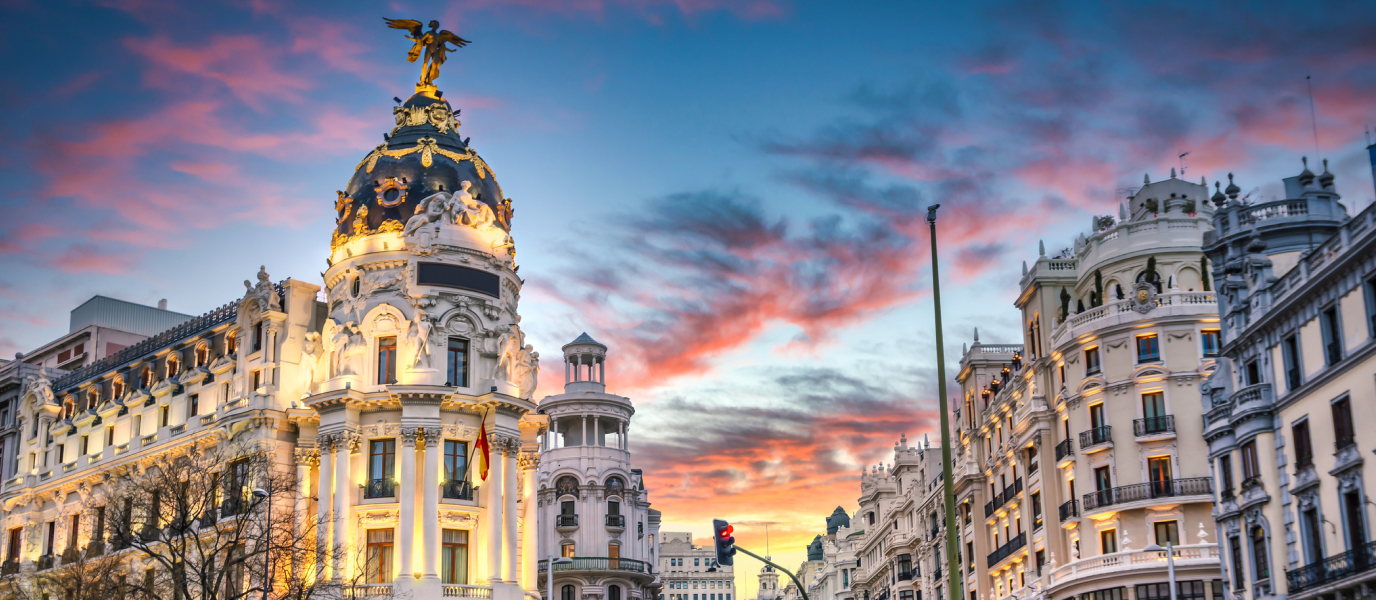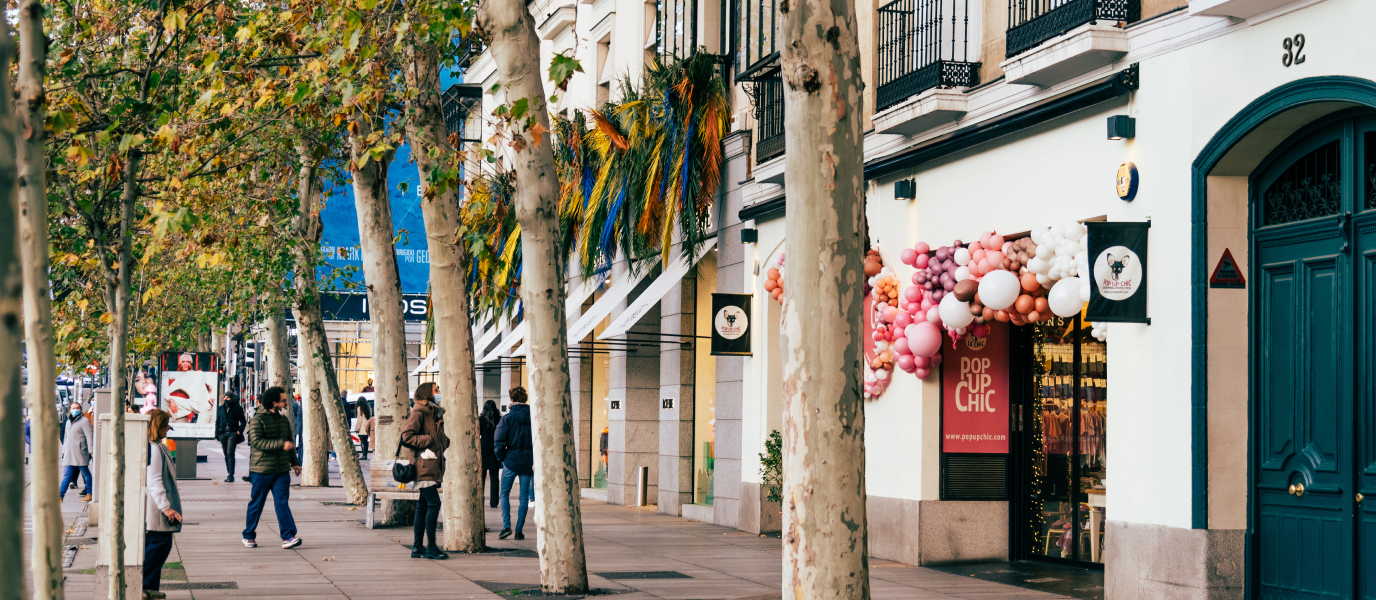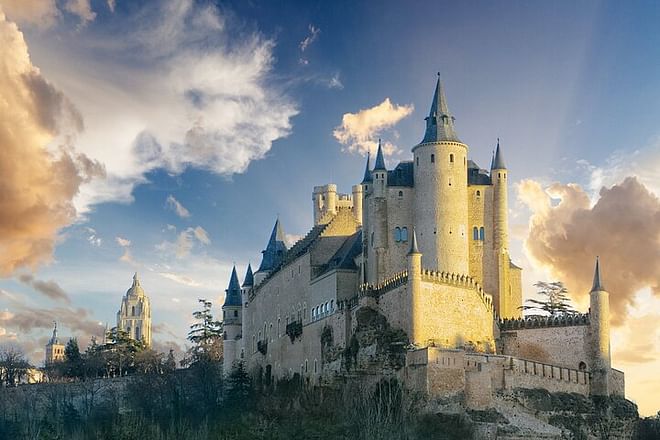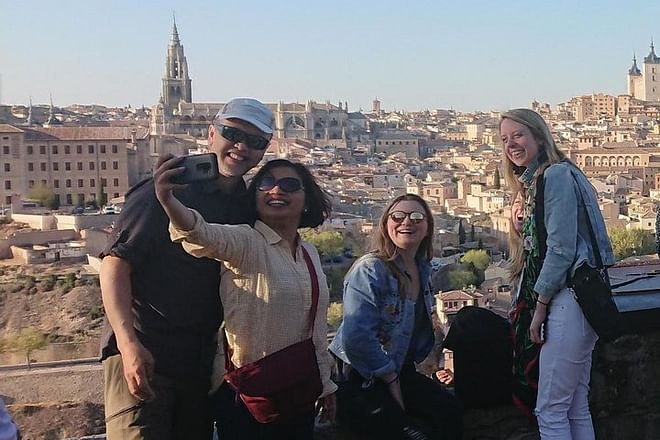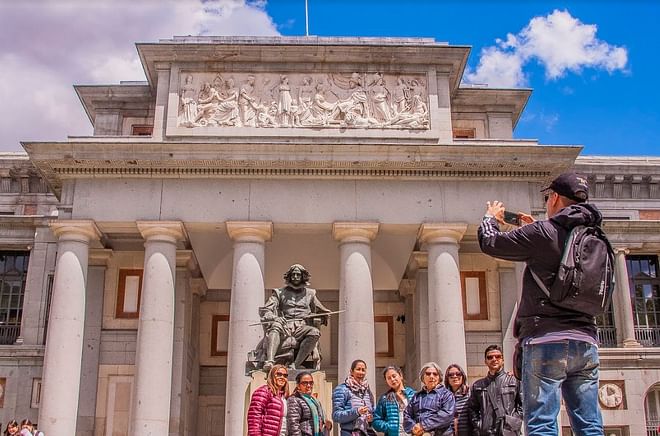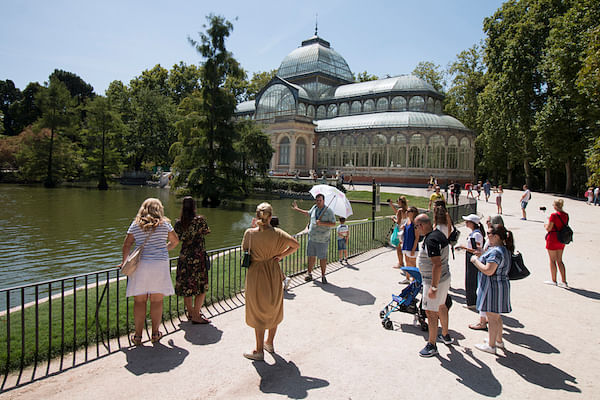A capital city such as Madrid may dazzle you with its architecture, its staggering amount of tourists and its frenetic pace of life. But all that fades into the background when you explore the La Latina district, whose layout hints at times gone by and where the bars and restaurants are small and authentic. If you’re looking for the best place to go for drinks and tapas, you’ve found it.
The boundary of Madrid’s main tourist area, which isn’t the same as that of the district, is found between Madrid de los Austrias, the axis formed by Sol-Gran Vía, Lavapiés and Madrid Río. Don’t worry too much about its large size, as we’re going to show you the essentials accessible by foot.
Why La Latina
The unusual name of La Latina owes to the nickname given to the writer Beatriz Galindo, a very important figure from the fifteenth century. This woman of letters was the teacher of Queen Isabella “the Catholic” and her children. Alongside her husband she also founded a hospital situated on Plaza de la Cebada, next to Calle Toledo, which was known as the hospital of La Latina.
The medieval district is recognisable by its narrow and crooked streets that hold surprises in the form of small palaces and squares and the odd secret garden. Part of the area used to lie outside of the city walls, in Madrid’s suburbs, hence why it was an area frequented by merchants who came to sell their goods. Look out for the names of the streets, which, much like Plaza de la Cebada (barley square), Plaza de la Paja (straw square) and Plaza de los Carros (cart square), make reference to the produce that was traded.
What to see in La Latina
Although people go to La Latina for drinks and tapas, it’s worth taking a stroll and discovering some of its most important monuments before you embark on your gastronomic journey. A must-see is the monumental Puerta de Toledo, which was inaugurated in 1827 as one of the historical gateways to the walled city of Madrid. Among the places of worship situated in La Latina, four of them stand out for diverse reasons. Due to its size and importance, one of them is the Basilica of San Francisco el Grande, which was built in the eighteenth century and boasts one of the largest cupolas in Europe (33 metres in diameter and 58 metres in height). We recommend going inside to see the paintings dating from the seventeenth to nineteenth centuries that are on display in its museum.
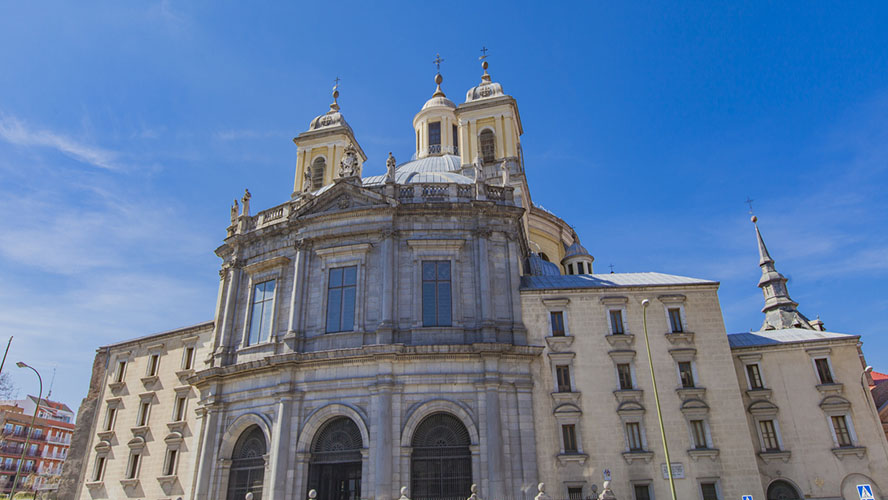
At the Church of San Pedro el Viejo, one of the oldest in Madrid, the most striking feature is its tower, which had previously been the minaret of a Moorish mosque, and the two shields dating from the time of the Emperor Charles V. The interior is larger than it would appear from outside and we recommended entering to see the carving of Jesús el Pobre, the work of Juan de Astorga from the eighteenth century. An interesting fact about this place of worship is that its bell is supposed to have the power to drive away storms to protect farmers.
Another must-visit is the Colegiata de San Isidro, which was a cathedral until the Almudena Cathedral was built. Its interior is magnificent with decoration by Ventura Rodríguez, and San Isidro, the patron saint of Madrid, is entombed in its main altar. Tied to this saint is also the Church of San Andrés, which is of Arabic origin and where, it is said, he liked to go to pray. It is one of the city’s oldest parish churches and is situated in the centre of La Latina. Next to it used to be the house of its patron saint, on the site of which the palace of the marqueses of Paredes was built, now home to the Museum of San Isidro.
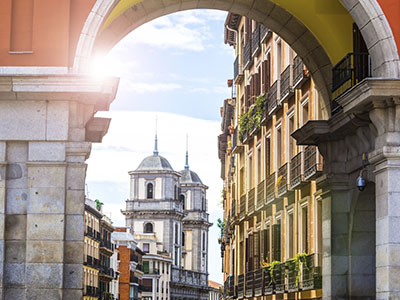
The walk wouldn’t be complete without stopping off at the Príncipe de Anglona Garden, a secret haven where you can take a break. Thanks to the tall walls that surround it, the small garden goes unnoticed on one side of Plaza de la Paja.
Squares, markets and Teatro de la Latina
Whiling away the hours on a terrace is one of the most popular activities of locals and visitors alike. Even the softest rays of sun are an explicit invitation to put out tables and chairs on the most popular squares in La Latina. Don’t be surprised if, upon turning a corner, you find throngs of people on Plaza de la Paja, Plaza de los Carros or Plaza de San Andrés, with children running all over the place. On Plaza de la Cebada tourists and residents merge on the way to the Mercado de la Cebada. This traditional market, one of the largest in the city, has been repurposed and, in addition to selling the usual fresh produce, now offers tasting areas serving gourmet or more traditional food.
In terms of open-air markets, the top spot goes to El Rastro, a street market dating back to medieval times that takes place along Calle Ribera de Curtidores and the surrounding streets. It’s the perfect place to find antiques, second-hand objects, crafts and cut-price clothing.
If you agree that watching the world go by is the best entertainment during the day, once evening falls and the doors of the Teatro de la Latina open, genuine magic is to be found. This large theatre founded by the antique dealer Juan Lafora Catalayud has seen real moments of splendour, as some of the best Spanish actors have graced its stage. If we had to choose one period from its long trajectory, it would be that between 1978 and 2010 when it was run by Lina Morgan, a much-adored actress in Spain, who took it out on a lease before buying it to save it from closure. Having been originally opened in 1919 it is still at the top of its game after a century of existence, offering high quality works. Be sure to put aside one evening for the theatre.
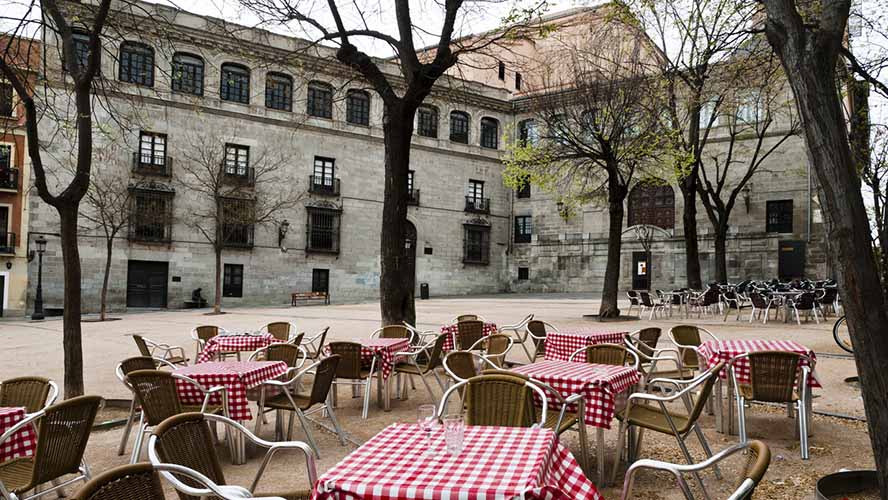
Traditions at museums
The two main museums in La Latina help us understand Madrid’s history and heritage. At the Museum of San Isidro and the Museum of the Origins of Madrid you can learn about archaeological heritage, art and traditions related to San Isidro. And to top it all off, the Museum of Popular Art and Traditions has everyday objects on display. A visit to the latter is also a good opportunity to see examples of corrala housing—Madrid’s traditional buildings formed around courtyards.
Tapas in La Latina: Cava Baja and Cava Alta
Bars, taverns, tascas, restaurants, terraces, the list goes on. The area of La Latina is not lacking in options when it comes to going for a vermouth, a sacred tradition in Madrid, which consists of a good vermouth—you can substitute it for a glass of wine or beer if you prefer—and an appetiser. Croquettes, fried calamari, spicy deep-fried potatoes, grilled pig’s ear or whitebait in vinegar are the most common tapas, although a day doesn’t go by without new creative options emerging.
The area around Cava Baja and Cava Alta, where the inns that accommodated merchants were once located, today boasts a great selection of bars and restaurants for tapas. The most popular are found on the two aforementioned parallel streets, especially Cava Baja, which runs between Plaza de la Paja and Plaza del Humilladero. Along a stretch of just 300 metres there are over 50 taverns, some as classic as Casa Lucio, which is renowned for its huevos estrellados (a dish of fried eggs and potatoes), the Basque tavern Lamiak, Casa Curro and the Enotaberna del León del Oro. We recommend booking ahead if you want to have lunch or dinner at a specific restaurant. The busiest time on Cava Baja is Sundays, when locals go for a vermouth in La Latina after visiting El Rastro. If, in addition to an aperitif, you fancy admiring the wonderful views of the Casa de Campo, head to the terraces of the Las Vistillas Gardens.
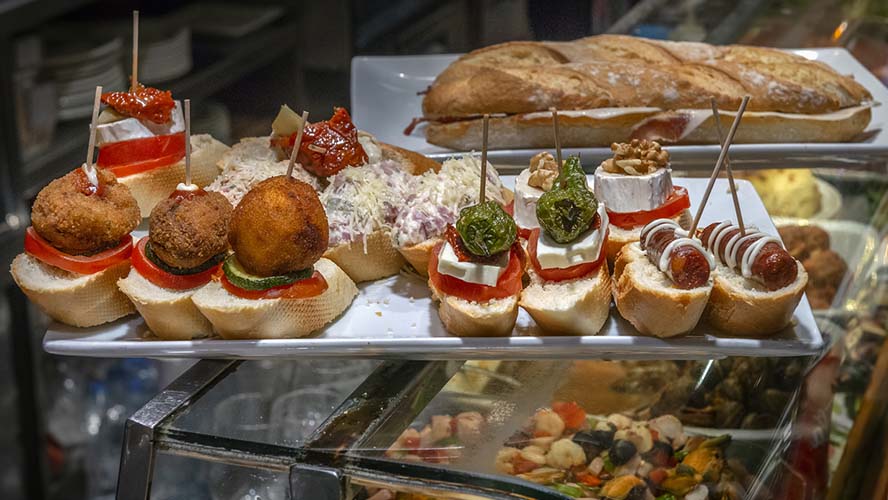
Fun and partying in La Latina
Music and fun doesn’t stop at any hour of the day. After going for tapas or dinner in La Latina you can enjoy music and nightlife until the early hours. One of the most captivating is Berlín Cabaret, which offers provocative shows, as well as Contraclub, which usually has live music. For dancing, you can try Shoko Madrid (commercial music) or Marula (international music and jazz).
If you’re after some flamenco or you’d like to check out a live performance, La Latina is home to one of the most renowned flamenco venues, El Corral de la Morería, as well as Sala Clan.
We mustn’t forget to mention that La Latina is one of the neighbourhoods in Madrid that hosts large local festivities. Some of the most important are the Verbena de la Paloma, which takes place in August and offers open-air concerts and lots of fun, as well as the Fiestas de San Isidro, the patron saint of Madrid, which is held, among other places, in the Las Vistillas Gardens.
